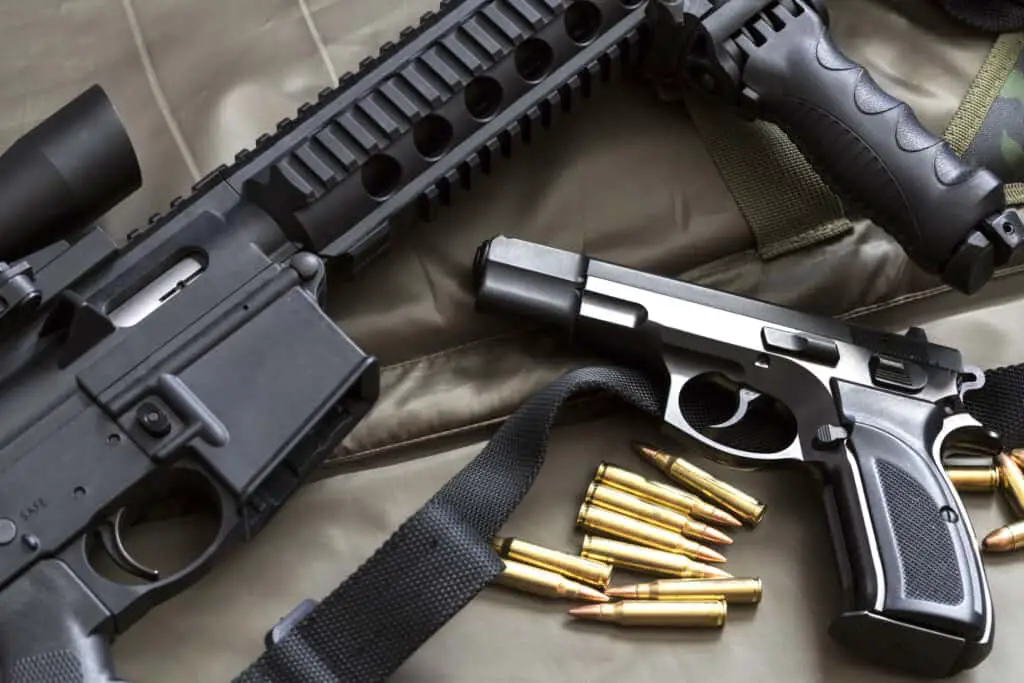

Hirem Maxim, an American-born British inventor, would take the machine gun to the next level with his Maxim gun. Gatling Gunīefore Browning developed his semi-automatic handguns and machine guns, Indianapolis, Indiana-based Richard Gatling had already created an earlier, more primitive version of the machine gun. forces in World War II and the Korean War, as well as by the infamous couple Bonnie and Clyde in their deadly criminal spree during the Great Depression.

military’s first semi-automatic handgun and versions of it remain a weapon of choice among military, law enforcement and sports shooters.Īnd the BAR would be used extensively by U.S. military and after only slight modifications, became the main U.S. 50 caliber machine gun, which he designed in 1933. Among Browning’s 128 gun patents, some of his best-known weapons include the M1911 pistol, the Browning Automatic Rifle (BAR) and the M2. In automatic weapons, power generated by the firing of the weapon is used to eject empty cartridges and reload. Browning, however, would become best known for his contributions to automatic loading firearms. Pump, or slide-action guns feature a mechanism where the shooter pulls back a grip on the gun’s forearm and then pushes it forward to eject the empty shell and reload the gun with a new shell. One of the most acclaimed firearms designer in history, John Moses Browning of Ogden, Utah, began designing for the New Haven-based Winchester Repeating Arms Company in 1883 and created a version of the rifle that incorporated a pump action. During the Civil War, the Henry was called “the rifle you could load on Sunday and shoot all week long.” Perhaps more importantly, the Henry became the inspiration for the classic Winchester rifle.
#BASIC TYPES OF GUNS MANUAL#
Each shot was then fed into the chamber through a manual mechanism.īenjamin Henry developed a similar model, in the Henry, and patented the design in 1860. The Spencer gun (a favorite of President Abraham Lincoln) loaded multiple cartridges at once by storing them in a magazine at the rear of the gun. The Spencer Repeating Rifle Company patented a design at the start of the Civil War that was capable of repeated firing following a single ammunition load. Double-barrel shotguns are still produced today. Today the name Deringer is commonly associated with small, concealable handguns.Īnother concept mounted multiple barrels onto a single stock to gain more bang for every trigger pull.
/cdn.vox-cdn.com/uploads/chorus_asset/file/6764897/guns_poll.0.jpg)
Deringer produced flintlock rifles for the U.S. Also getting his start during this period was Henry Deringer. Remington Arms Company has persisted to current times (although the company filed for bankruptcy in February 2018 due to sluggish sales). gun makers got their start then, including Eliphalet Remington, who began producing flintlock rifles in 1816. government and some states began hiring smaller gun-making outfits to produce guns or gun parts, based on the weapons being produced at the U.S. Remington ArmsĪround the same time, the U.S. At first the armory stored ammunition and gun carriages, but by the 1790s the armory began to manufacture muskets and eventually other guns.įollowing the Revolutionary War, Congress also established Harpers Ferry Armory in West Virginia in 1798 to boost weapon and ammunition production. In order to boost the fledgling nation’s home-grown arsenal, General George Washington ordered the establishment of the Springfield Armory in Springfield, Massachusetts, in 1776. A well-trained soldier could generally fire and reload a flintlock weapon three times a minute, whereas the American long rifle required a more tightly loaded bullet and generally took a minute to load and fire a single shot. The spark used to ignite gun powder in early American-made smoothbore weapons was usually generated by a piece of flint striking a metal plate or “pan” coated in gun powder.


 0 kommentar(er)
0 kommentar(er)
